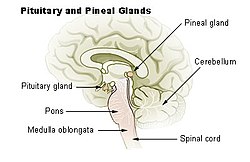Sometimes you need to look at Life from a different perspective.- Unkown Quotes.
| |
As the first few days of Oli’s life turned into the first few weeks, results began to trickle in from Oliana’s many tests. And I do mean trickle. Sometimes it seemed to take forever to hear anything back. I guess I can sum up what most of those tests found by saying, they were pretty normal, except… not completely.
My sweet Oli is just kind of quirky.
The cardiologist said that her echo was normal except for a few things. Oli’s first quirk. The right ventricle in her heart was a little larger than normal and there was a small hole in her heart that should have closed when she was born, except that it didn’t. It was very minor.
She had a repeat pelvic ultrasound to check her kidneys. They still had extra fluid in them and then the doctor threw in a bonus quirk. She had 2 uterus's.
What? I’d never heard of that either.
I was starting to think that I should have paid more attention in nursing school.
Of course, as soon as I got home I Googled “two uteruses”.
Have I mentioned how much I love Google?
Apparently this is not all that uncommon.
Google told me that the there were two draw backs.
Sometimes when a woman with two uterus's gets pregnant the baby can be born preterm because the uterus's do not stretch to the size of one normal uterus. The baby runs out of room.
The second draw back was that it is possible for a woman to get pregnant at two different times and have pseudo twins. A baby in each uterus.
Well, Google. I’d say those are pretty big drawbacks!!!
A trip to the endocrinologist revealed that her pituitary labs were normal, except her pituitary gland did not look normal on the MRI. He said that her posterior pituitary gland was ectopic. Which just means that it wasn’t in the spot that it was supposed to be. Oli has had a few more MRI’s since then and I have heard many different opinions about how her pituitary looks.
Is it moving? Changing? Mutating? I have no idea.
I don’t think anyone really has a definitive answer as to what is wrong with the appearance of that gland.
I told you she was quirky.
The rest of the MRI results were normal except….(Yep. You guessed it) for a few things.
Apparently she did not have an optic chiasm or a pineal gland.
Are those important?
Here is what Google tells me about these VERY important pieces of her body.
From Wikipedia, the free encyclopedia
| Brain: Optic chiasm | ||
|---|---|---|
 | ||
| Brain viewed from below; the front of the brain is above. Visual pathway with optic chiasm (X shape) is shown in red (1543 image from Andreas Vesalius' Fabrica) | ||
 | ||
| Optic nerves, chiasm, and optic tracts | ||
| Latin | chiasma opticum | |
| Gray's | subject #197 883 | |
| MeSH | Optic+chiasm | |
| NeuroLex ID | birnlex_1416 | |
[edit] Pathways
The images on the nasal sides of each retina cross over to the opposite side of the brain via the optic nerve at the optic chiasm. The temporal images, on the other hand, stay on the same side. This allows the images from either side of the field from both eyes to be transmitted to the appropriate side of the brain, combining the sides together. This allows for parts of both eyes that attend to the right visual field to be processed in the left visual system in the brain, and vice versa. This is linked to skin sensation which also reaches the opposite side of the body, after reaching the diencephalon (rear forebrain). This decussation (crossing) is an adaptive feature of frontally oriented eyes and therefore having binocular vision. (Some animals, with laterally positioned eyes, have little binocular vision, so there is a more complete crossover of visual signals.)Beyond the optic chiasm, with crossed and uncrossed fibers, the optic nerves become optic tracts. The signals are passed on to the lateral geniculate body, in turn giving them to the occipital cortex (the outer matter of the rear brain).[2]
From Wikipedia, the free encyclopedia
| Pineal gland | |
|---|---|
 | |
| Diagram of pituitary and pineal glands in the human brain | |
| Latin | glandula pinealis |
| Gray's | subject #276 1277 |
| Artery | posterior cerebral artery |
| Precursor | Neural Ectoderm, Roof of Diencephalon |
| MeSH | Pineal+gland |
The MRI also showed that her optic nerves are so extremely small that they can hardly be visualized. In a few years, they weren’t visualized at all.
And that folks is one reason why my girl does not see and a BIG reason why she does not sleep!


No comments :
Post a Comment